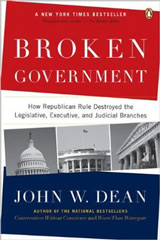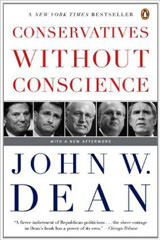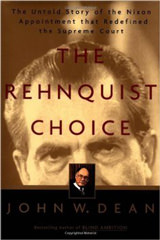Justia columnist and U. Washington law professor Anita Ramasastry discusses the way in which Section 230 of the Communications Decency Act (CDA) has unintentionally offered a safe harbor to websites on which people’s exes post nude or other intimate photos that were taken during the course of a relationship, and that were intended by the subject of the photo to be forever kept private. Ramasastry notes how adding additional information to the photo, such as a home address, could be a crime, as it aids cyberstalking. In addition, she urges that Congress ought to amend Section 230 in order to prevent unintended negative consequences like these.
Justia columnist and U. Washington law professor Anita Ramasastry comments on Senator Al Franken’s proposed legislation that would regulate cyberstalking and geolocation apps—some of which are installed in a given device without notice of their presence being provided to the user. As Ramasastry explains, some of the chief concerns in this area of law include the possible stalking of domestic violence victims, and the safety of children. As Ramasastry explains, this topic not only sparked Franken’s interest, but also is of interest to the FTC, and the Senate Judiciary Committee.
Justia columnist and U. Washington law professor Anita Ramasastry comments on the new couples pages feature on Facebook, which aggregates a Facebook user’s information with that of his or her self-designated significant other. Ramasastry notes that the feature has been controversial, and explains why some users have been upset by it. She notes, too, that Facebook is entering a privacy gray area with the couples pages feature, under which Facebook relies on its privacy policies, but users feel they have lost control. Moreover, Ramasastry suggests that the Electronic Privacy Information Center (EPIC), which previously criticized Facebook’s Timeline feature, may want to scrutinize Facebook’s couples pages feature as well. Finally, Ramasastry questions whether Facebook’s couples pages are permissible under Facebook’s recent settlement with the FTC.
Justia columnist and U.C., Davis law professor Vikram Amar takes strong issue with Justice Scalia’s recent remark that certain constitutional questions are “easy”—including questions relating to the constitutionality of the death penalty, laws restricting abortions, and limits on the rights of gays and lesbians to engage in homosexual activity. Amar argues that even if one uses Scalia’s own interpretive method of originalism, the answers to such constitutional questions are far less easy than Scalia claims them to be; and Amar cites a number of interesting examples to prove his case. Amar also contends that a full approach of originalism would go much further than the examples Scalia gives, would destroy important and basic contemporary Court precedents, and thus would seriously disrupt constitutional law as we know it. Finally, Amar contends that the counterarguments that Scalia might make to the objections that could be raised regarding his views would only get him into deeper trouble analytically.
In Part Two in a two-part series of columns on an interesting set of Fourth Amendment issues, Justia columnist and Cornell law professor Sherry Colb continues to address the question whether law enforcement may constitutionally, without a warrant or probable cause, use global positioning technology to track a suspect’s whereabouts through his cellular phone. Specifically, here in Part Two, Colb considers the two possible ways in which the Supreme Court uses the phrase “reasonable expectations of privacy” in practice in Fourth Amendment cases. In the phrase, Colb notes, “reasonable” may mean “empirically realistic,” but it also may mean “morally justifiable.” Colb gives examples of Supreme Court and Sixth Circuit cases in which the phrase is used in these two different ways. In addition, she examines the exclusionary rule’s role here—noting that the rule, which forbids evidence from being admitted in court if it was obtained unconstitutionally, may in concrete cases seem to simply help out criminals, but at a more abstract theoretical level, protects us all from police misconduct. Colb also predicts that the Supreme Court will need to revisit these issues sooner, rather than later, to ensure that the law is clear.
Justia columnist and U. Washington law professor Anita Ramasastry comments on the use of biometrics in school lunch lines and elsewhere in schools. More specifically, she notes, schools are using an infrared scanner that identifies children’s unique palm and hand vein patterns, and converts these patterns into an algorithm through which the child can be recognized quickly and uniquely by a hand scan. Ramasastry raises privacy concerns about this kind of scanning: Could it lead kids to see other compromises of their privacy as commonplace? Will the databases that contain the scans be used for other purposes—even when the kids become adults? Might law enforcement attempt to use the databases of the hand scans? And what about parents with religious objections to schools’ using the hand scans on their children? At the very least, Ramasastry suggests, the scanning system should be “opt in” and not “opt out,” so that parents can think carefully about allowing their children to become part of the scanning system, and thus part of the related database.
In Part One in a two-part series of columns on an interesting set of Fourth Amendment issues, Justia columnist and Cornell law professor Sherry Colb discusses the question whether law enforcement may constitutionally, without a warrant or probable cause, use global positioning technology to track a suspect’s whereabouts through his cellular phone. Previously, Colb explains, the U.S. Supreme Court held in United States v. Jones that police need a warrant and probable cause to attach a global positioning device to a vehicle and thereby track a suspect’s whereabouts. But now, the U.S. Court of Appeals for the Sixth Circuit has held that police may, without a warrant or probable cause, use global positioning technology to track a suspect’s whereabouts through his cellular phone. Colb examines the legal concepts that the Supreme Court and Sixth Circuit decisions invoke, including those of trespass, and of privacy, and comments on the court’s analysis.
Justia columnist and Hofstra law professor Joanna Grossman, and Justia guest columnist and Stanford law professor Lawrence Friedman comment on the law regarding the despicable practice of “upskirting.” As Grossman and Friedman explain, upskirting is the secret taking of photos or videos with a camera that is angled so as to look up a woman’s skirt. They begin by discussing expectations of privacy, and go on to consider the particular invasion of privacy that is perpetrated through upskirting. They then note that while one might assume that upskirting (and its counterpart, downblousing) in a public place would be illegal and penalized in every jurisdiction, in fact that is not the case. Grossman and Friedman explain the puzzling legal status of upskirting in many jurisdictions, and comment on why the current law in this area often defies our intuitions about privacy—though some recent state laws are now authorizing punishments for upskirters.
Justia columnist and U. Washington law professor Anita Ramasastry comments on regulatory responses in the EU and the U.S. regarding Facebook’s facial-recognition tool, which suggests the identities of registered Facebook users for possible tagging by other users in uploaded photos. As Ramasastry explains, the tool has sparked concern by EU regulators due to privacy worries, and even in the U.S., Facebook has voluntarily—but perhaps temporarily—suspended the tool. Ramasastry notes some reasons why Facebook users may have concerns about the tool, including its accompanying archive of tagged photos, which could in theory be used for law-enforcement, intelligence, or other purposes that users never authorized. In the EU, Facebook has agreed to soon stop using the tool, and to delete related data. But what will happen with the tool and the resulting database, here in the U.S.? With complaints from the Electronic Privacy Information Center (EPIC), a leading NGO, and a complaint filed with the FTC, the facial- recognition tool is now in hot water in the U.S. as well as the EU.
Justia columnist and attorney Julie Hilden comments on a fair-use case that one judge on the Ninth Circuit panel compared to a telenovela. When a thief stole wedding and wedding-night photos from two Latin American celebrities that revealed that they were secretly married, and had been for several years, a gossip magazine published the photos. The two celebrities then registered their copyrights in the photos, and went to court to enforce them. The magazine, however, mounted a “fair use” defense, in order to try to avoid liability. Hilden describes and comments on the Ninth Circuit decision in the case, which sparked a dissent. Going through the four key fair-use factors one by one, the majority opinion suggests that the magazine has a steep uphill battle in proving fair use, as Hilden notes. Hilden also takes issue with the panel majority’s view that only “pictorial” photographs and those “factual” photographs that depict events should be protected, in this context. She argues that, to the contrary, even mechanical photo-booth photos ought to be protected in such situations.
Justia columnist and Cornell law professor Michael Dorf comments on a recent decision from the U.S. Court of Appeals for the Eighth Circuit. As Dorf explains, the decision upheld a provision of a South Dakota law mandating that women seeking an abortion be informed that, with the abortion procedure, comes “an increased risk of suicidal ideation and suicide.” Although the medical literature shows only a correlation, and not a causal relationship, between abortion and suicide, and although that correlation likely stems entirely from some of the underlying factors that lead women to seek abortions in the first place, the Eighth Circuit still upheld the law at issue. Although the Eighth Circuit’s decision was quite plainly the wrong one, Dorf notes, he also predicts that it’s very unlikely that the U.S. Supreme Court will take the case. He then explains why the Court is likely to decline review and why, if it does grant review, it might uphold the law, even though it ought to be struck down.
Justia columnist and attorney Julie Hilden comments on an interesting case regarding educational privacy. The case arose when a Florida college instructor sought to find out the name of the student who had filed a complaint with the college against him. Federal and Florida law regarding student privacy were stumbling blocks, but the instructor ultimately did find out the name of the complaining student. As Hilden explains, precedent indicates that students’ educational privacy rights yield only if a given communication is held to be not directly, but only tangentially, related to a student. Here, that very holding was made—since although the student sent the complaint, the substance of the complaint was about the professor. Hilden questions the court’s reasoning, and questions, more broadly, whether privacy is much needed in the education context in the first place.
Guest columnist and Justia writer and editor David Kemp comments on a new development on Facebook: users’ ability to add the fact that they have become organ donors as a “Life Event” on their Timelines. Kemp notes that the reason for this development is to encourage organ donation after death—and that it’s been very successful in doing so. He also comments on three likely reasons why Facebook chose this particular cause, as opposed to all the other causes that it might have promoted. While applauding the feature’s benefits, Kemp also considers some risks connected to the use of Facebook in this way—including the risk that other medically-related applications may lead to the disclosure of private health information, which could potentially implicate federal privacy laws. (Already, the “Life Events” application, Kemp points out, can reveal a broken bone or weight loss.) Ultimately, Kemp raises the question whether Facebook may evolve in such a way as to provide not just social networking, but also social engineering.
Justia guest columnist Anjali Dalal, Postdoctoral Associate in Law and Google Fellow, Information Society Project at Yale Law School, comments on the Cyber Intelligence Sharing and Protection Act (CISPA). Dalal argues that while cybersecurity is a very genuine concern for the U.S., CISPA’s approach is not the way to address that concern. Dalal makes four key points to support her thesis, contending that (1) CISPA could reach common, otherwise legal Internet activities; (2) that information received from private companies under CISPA could be used for purposes other than cybersecurity; (3) that CISPA appears to effect an end-run around the Fourth Amendment; and (4) that CISPA subordinates civil-liberties protections to national security concerns. Dalal also describes the next steps that we are likely to see in the battle over CISPA.
Justia columnist and U. Washington law professor Anita Ramasastry comments on the phenomenon of Internet mug shot galleries. Unlike a Megan’s Law database, Ramasastry explains, these galleries show photos of arrestees, who have not yet been, and may never be, convicted of any crime. That raises fairness issues, Ramasastry argues. Moreover, she notes that not only police departments, but also private companies, collect such photos together into mug-shot galleries. Because the private companies’ galleries tend to dominate search results, arrestees have no recourse except to pay the private companies to take down the photos. Because of issues like these, Ramasastry argues that this is an area that is ripe for reform—for you can now be exonerated in court, but not on Google. She also briefly discusses the phenomenon of police departments putting mug shots on their Facebook pages.
Justia columnist and Cardozo law professor Marci Hamilton comments on the recent attack on reproductive and privacy rights by GOP presidential candidates Rick Santorum and Mitt Romney. Hamilton notes that some state legislatures, such as those of Ohio and Utah, have also taken similar stances—with Arizona and Kansas very possibly following the trend. Hamilton questions the wisdom of these stances, in light of the fact that a sizable majority of the country is not opposed to contraception, and the fact that only with the support of independent and moderate voters could the GOP candidate possibly beat President Obama’s re-election bid. Hamilton also notes that there has been a substantial backlash against such measures, by female legislators who are registering their protest by introducing laws that would, for instance, make it harder for men to obtain Viagra, and regulate ejaculation except when it occurs in the context of conception. Vasectomies, too, have been the target of the female legislators’ efforts—which, of course, are not serious attempts at getting laws passed, but are very serious attempts to draw attention to what the legislators believe is a dangerous attack on women’s rights. Hamilton adds her own “modest proposals” to those of the female legislators, and warns that moving into this delicate and personal area may cost the GOP the presidential election and/or congressional seats.








































